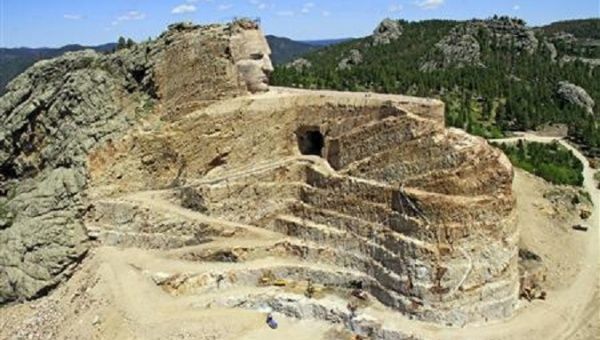Ta-Sunko-Witko, popularly known as “Crazy Horse” was a Sioux Chief born on 1842 near present-day Rapid City, South Dakota, U.S. He died on Sept. 5, 1877, in Fort Robinson, Nebraska during a struggle with white occupiers of his land.
Crazy Horse is recognized among his people for his commitment to preserving the tradition and values of the Lakota way of life. The chief never allowed anyone to photograph him as part of his people’s customs.
At a very young age, he fought in the 1865-68 war led by the Oglala chief Red Cloud against U.S. settlers in Wyoming. He played a key role in destroying William J. Fetterman’s brigade of 80 men at Fort Phil Kearny in 1867.
He also fought to prevent U.S. encroachment on Lakota lands following the Fort Laramie Treaty of 1868. He did the same by helping to attack a surveying party sent into the Black Hills by General George Armstrong Custer in 1873.
After gold was discovered in the Black Hills, Dakota Territory in 1874, the U.S. disregarded Sioux Treaty rights and encroached onto the Native American reservation.
Sitting Bull was another Lakota Chief and a resistance leader on the Northern Plains. Both Bull and Horse joined forces and destroyed Custer’s Seventh Cavalry on June 25, 1876.
After the victory, Crazy Horse was pursued by Colonel Nelson A. Miles’ army. The army campaign was started to force all Native Americans to go to government agencies. Miles’ army pursued Lakota and their allies throughout the winter of 1876-77. The relentless pursuit and decline in Buffalo population led Crazy Horse to surrender in Nebraska on May 6, 1877. He was one of the last important chiefs forced to yield.
In Sept. 1877, he left the reservation without authorization to take his ill wife to her parents. George Crook, fearing that he was returning to the battlefield, ordered him to be arrested. When Crazy Horse realized that he was being taken to the guardhouse, the chief started struggling against the arresting officers. During the scuffle, a soldier killed him with his bayonet leading to the death of the Sioux Chief.
Crazy Horse is still revered for being a visionary and fierce leader who battled hard against white encroachment. In 1948, a monument honoring him began construction. The monument is an ongoing mountain sculpture named the Crazy Horse Memorial which is being carved from Thunderhead mountain. It is located in the Black Hills of South Dakota. The memorial is a part of museum and cultural center honoring Native Americans.
https://www.facebook.com/teleSUREnglish/videos/1072599912883410/

